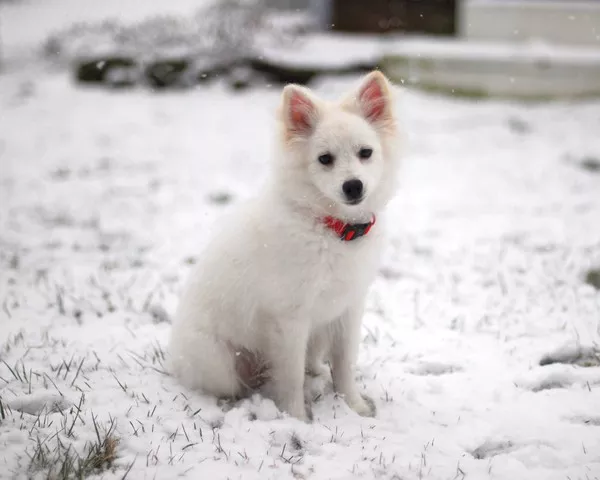American Eskimos, renowned for their stunning white coats and captivating personalities, have become a popular choice for dog enthusiasts across the globe. One of the frequently asked questions about these lovable companions is, “How big do American Eskimos get?” In this comprehensive exploration, we delve into the various factors that influence the size of American Eskimos, shedding light on their growth patterns, genetics, and the importance of proper care in ensuring their optimal development.
Historical Context and Breed Overview
To truly grasp the potential size of American Eskimos, it’s crucial to delve into their historical context and breed origins. American Eskimos are descendants of the Nordic Spitz dogs, which were brought to the United States by European immigrants in the early 20th century. Originally known as the “German Spitz,” these dogs underwent a transformation in nomenclature during World War I, when anti-German sentiments prompted a change to the more neutral “American Eskimo Dog.” Despite the name, they have no direct historical connection to Eskimo cultures.
Varieties of American Eskimos
One of the fascinating aspects of American Eskimos is the existence of three size varieties: Toy, Miniature, and Standard. Each category comes with its own set of characteristics, including size, temperament, and suitability for different living environments. The Toy American Eskimo stands at a diminutive 9 to 12 inches in height, while the Miniature American Eskimo ranges from 12 to 15 inches. The Standard American Eskimo is the largest of the trio, reaching a height of 15 to 19 inches. Understanding these size categories is vital in predicting and managing the growth of these remarkable dogs.
The Role of Genetics
Genetics play a pivotal role in determining the size of American Eskimos. The traits passed down from one generation to the next can significantly influence how big an American Eskimo will grow. While breeders can provide insights into the potential size of a puppy by examining the size of its parents and ancestors, it’s important to note that genetic variation can lead to surprises. The interplay of genes can result in American Eskimos that fall outside the typical size range for their category, adding an element of unpredictability to their growth.
Puppyhood to Adulthood
The growth journey of American Eskimos is a fascinating process that unfolds in distinct phases. During the puppyhood stage, these fluffy companions undergo rapid growth, reaching a considerable size in a short span. Puppy owners often witness their American Eskimos transforming from adorable balls of fur to lively, energetic companions. However, it’s crucial to approach this phase with care, ensuring that the puppy receives proper nutrition, veterinary check-ups, and socialization to set the foundation for healthy development.
Nutrition and Its Impact on American Eskimo Growth
Proper nutrition is a cornerstone of ensuring the optimal growth of American Eskimos. The type and amount of food provided during the puppyhood stage can significantly influence their size as adults. High-quality puppy food, rich in essential nutrients, supports bone and muscle development, laying the groundwork for a robust and well-proportioned physique. It is advisable to consult with veterinarians or experienced breeders to determine the most suitable diet for American Eskimo puppies based on their individual needs.
Exercise Requirements
In addition to nutrition, exercise plays a vital role in the growth and development of American Eskimos. These dogs are known for their high energy levels and agility, making regular exercise a necessity. However, striking the right balance is key, as excessive exercise during the puppyhood stage can potentially impact the development of bones and joints. Responsible exercise routines, tailored to the age and size of the American Eskimo, contribute to a healthy and well-proportioned adult dog.
Health Considerations
While American Eskimos are generally a healthy breed, it’s essential for owners to be aware of potential health considerations that can impact their growth. Hip dysplasia, a common orthopedic issue in dogs, can affect the development of the hip joint and lead to mobility issues. Regular veterinary check-ups and proactive measures, such as joint supplements and a balanced diet, can mitigate the risk of such challenges and contribute to the overall well-being of the American Eskimo.
Grooming Practices
The luxurious double coat of American Eskimos requires diligent grooming to maintain its pristine appearance. Regular brushing helps prevent matting and removes loose hair, contributing to the health of the coat and skin. Grooming also provides an opportunity to inspect the dog for any skin issues or abnormalities that may impact their overall well-being. Maintaining a consistent grooming routine not only enhances the aesthetic appeal of American Eskimos but also ensures they are comfortable and content.
Training and Socialization
Training and socialization are integral components of raising well-balanced American Eskimos. Starting early with basic obedience training sets the foundation for a well-behaved adult dog. Socialization, exposing the puppy to various people, environments, and experiences, helps shape their temperament and reduces the likelihood of behavioral issues. Well-mannered American Eskimos not only make delightful companions but are also more adaptable to different situations, contributing to a harmonious coexistence with their human families.
Conclusion
In conclusion, the size of American Eskimos is influenced by a combination of genetics, nutrition, exercise, and overall care. Understanding the growth phases, from puppyhood to adulthood, allows owners to provide the necessary support for their American Eskimos to reach their full potential. By embracing responsible breeding practices, maintaining a healthy lifestyle, and prioritizing proper grooming and training, dog enthusiasts can ensure that their American Eskimos not only grow to their expected size but also thrive as happy and well-rounded companions. As stewards of these magnificent dogs, it is our responsibility to nurture their potential and celebrate the unique qualities that make American Eskimos a cherished part of our lives.


